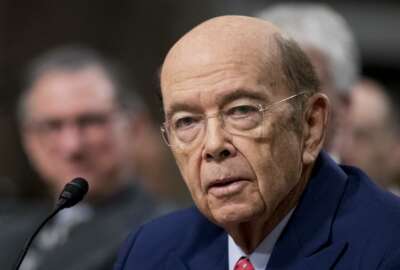
Lessons learned during 2020 Census prep already shaping next decennial count
The Commerce Department is planning to use U.S. Postal Service workers to help with its 2018 end-to-end tests.
Commerce Secretary Wilbur Ross on Tuesday warned senators that in some cases it was too late to make sweeping changes to speed up IT system integration, simplify contracts and slow spending for the 2020 Census.
“What we will do is, as we get through the 2020 [Census], I promise you there will be a very thick volume of lessons learned, so at least there won’t be the replication of the same kinds of mistakes that were made here,” Ross said to members of the Senate Committee on Homeland Security and Governmental Affairs.
The Government Accountability Office’s Comptroller General Gene recommended that committee members consider passing legislation requiring planning and guaranteed funding for the Census Bureau to test out aspects of the decennial census.
“The one thing that I would urge the Congress to do, though, is to focus on the 2030 Census in 2021,” Dodaro said. “I testified on preparations for the 1990 Census between 1985 and 1989 eight times, and every time this conversation comes up, but every time after the decennial is over, attention gets diverted by the administration and by the Congress, and the next thing you know we’re too late to change the next round of the cycle.”
That conversation refers to the concern over cost overruns and timelines running behind schedule in the lead up to the decennial count.
Ross testified earlier this month before the House Committee on Oversight and Government Reform, and explained Census’ new $15.6 billion lifecycle cost estimate was in response to the 40 percent cost overrun of the Census Enterprise Data Collection and Processing (CEDCaP) program, and the delayed development and testing of 43 systems needed for the 2018 End-to-End Test that started in August.
The new cost estimate also includes $1.2 billion for “unforeseen developments” and a request for a $187 million adjustment for fiscal 2018.
“On the whole, we found that the prior administration provided overly optimistic assessments of both the ease of implementing new technologies and the cost savings they would provide,” Ross said. “Also, most of their key contracts are on a time-and-materials basis, which are the most dangerous forms of contract. The prior administration also failed to follow basic management practices such as using certified cost estimators and checking estimates against actual costs. Their estimates instead were made by subject matter experts. We’re working today closely with GAO to address those failures and correct the record.”
Dodaro said GAO’s concerns were three-pronged, and included concerns about the bureau attempting a range of innovations it hasn’t been able to test, implementing and securing IT systems, and unreliable cost estimates.
“We didn’t deem the last cost estimate in 2015 reliable for a number of reasons,” Dodaro said. “As soon as we get full documentation from the Commerce Department and Census Bureau, we will review it and determine whether or not we believe the current estimate is reliable.”
Dodaro told committee members if the Census Bureau wanted to move things forward, it was important to get a new director and deputy director at the bureau.
He also pointed out that the government program office that’s overseeing the integration of Census’ IT systems has a number of vacancies — about 37 of the 53 positions are filled.
According to GAO, the Census Bureau reported only four of the 43 systems as completed and tested. Of the remaining 39 tests, the bureau reported it had “deployed a portion of the functionality for 21 systems to support address canvassing for the 2018 End-to-End Test; however, it had not yet deployed any functionality for the remaining 18 systems for the test.”
GAO’s concerns mirror those of the senators.
Sen. Heidi Heitkamp (D-N.D.) said she was worried about the failure to conduct test runs and how that would impact counting American Indian tribes and rural communities.
Heitkamp said her concern is that American Indian reservations provide unique challenges for the Census Bureau, like a historic distrust of the government, a lower likelihood of deliverable mail, and bare population centers.
“The Census Bureau determined two tests were necessary to adequately prepare for potential roadblocks on the reservation and how we could have a more successful Census effort on the reservations,” Heitkamp said. “However, both of those tests were canceled and there are no plans to which I am aware of to replace them with any sort of tests related to the challenges the census will face in Indian country. I think this is a mistake and risks the success of the 2020 Census in states, especially in the western United States.”
Sen. Ron Johnson (R-Wis.) asked Ross if it was too late to step back from the contracting structure currently in place.
“Coming from the private sector, is this how you would have designed it, if you would have been in charge of trying to improve technology of the Census?”
“No,” Ross said, “I think complexity is the enemy of cost control.”
“But you’re saying it’s too late at this point in time to back away from that complexity, we ought to be looking ahead to the 2030 [Census] to do things,” Johnson said.
Ross pointed out that of roughly a dozen major contracts, there are about 100 or so contractors and subcontractors. On a technical integrator contract alone, Ross said, there are 17 subcontractors.
The technical integrator is one of the most expensive and tricky features, Ross said, and that’s not counting the “pretty big task” of managing 17 subcontractors.
The senators were, however, encouraged by news that Commerce was negotiating with the U.S. Postal Service to use postal workers for an end-to-end test in Providence, Rhode Island next year.
Ross said the plan would be that once selected postal workers finished their regular workday, they would become a temporary employee of the Commerce Department and conduct the enumeration, or counting, for the Census.
“Our feeling is those are people with very good institutional knowledge of occupied and unoccupied residences,” Ross said. “I don’t think anybody views postal workers as threatening coming to their property, and therefore I think it will help overcome some of the issues that others have raised about people being reluctant to deal with the federal government. We’re trying to use additional systems for the interaction. If we can make the postal thing work, it probably would be the most cost-efficient way to improve accuracy of the Census.”
Ross said Commerce is also planning on putting kiosks with Census forms at post office locations, which can help with rural communities and tribal reservation populations. He also said his department was having some conversations with the Internal Revenue Service about how it could connect the Census to tax forms. However, he said he wasn’t convinced that would help the relationship between the Census Bureau and the American public.
Copyright © 2025 Federal News Network. All rights reserved. This website is not intended for users located within the European Economic Area.





